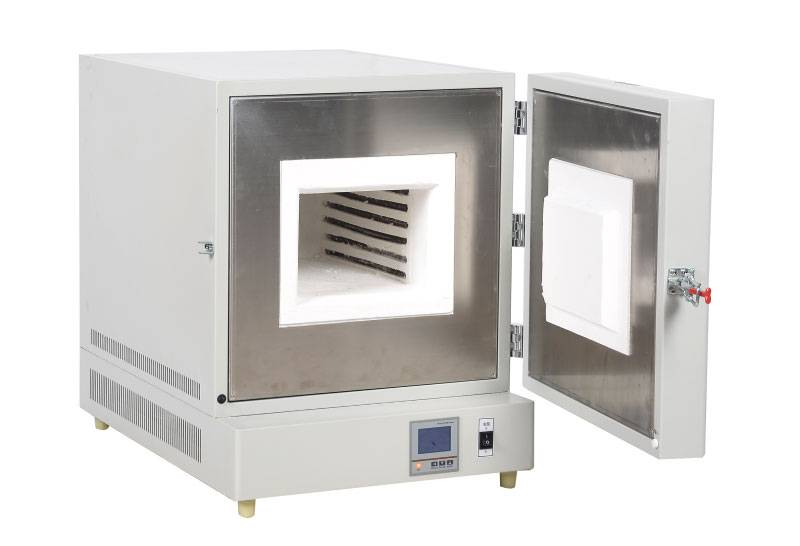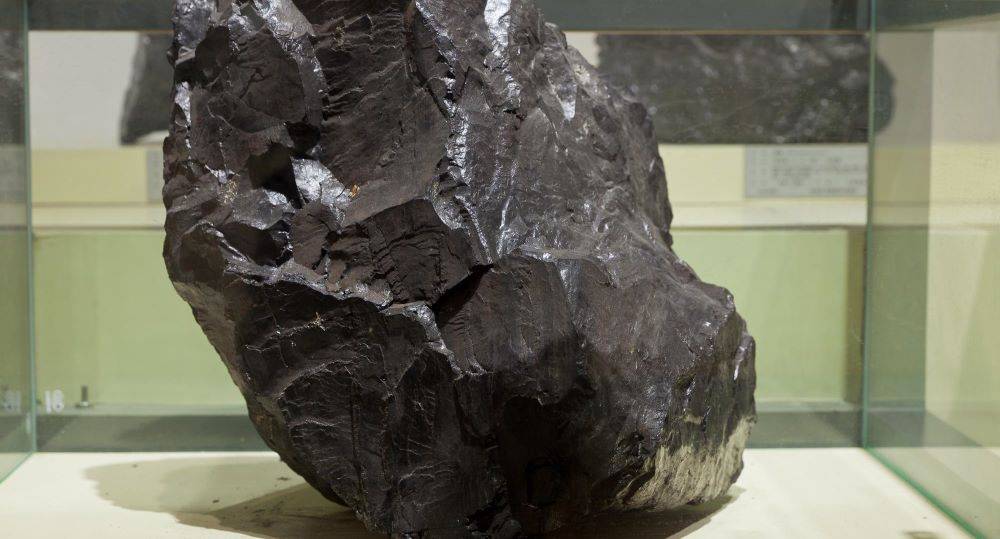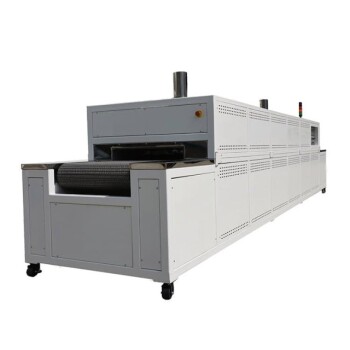马弗炉的原理和结构
马弗炉的类型
实验室马弗炉有多种形式,每种形式都有其独特的加热原理和应用。最常见的类型包括电马弗炉、微波马弗炉和燃气马弗炉,每种类型都能满足科学界的特定需求。
电马弗炉因其在材料成型、熔化、干燥和加热等任务中的多功能性而备受推崇。与依靠电磁场加热材料的感应炉不同,电马弗炉采用电加热耐火元件,并将其置于坚固的金属容器中。这种设计使其能够在更高的温度和更大的功率密度下运行,适合要求更高的应用。
箱式高温炉是马弗炉的经典变体,形状通常与箱体相似。这类窑炉具有更强的隔热性能和可定制的尺寸,通常采用前开门的方形设计。炉门设计通常包括一个内门,以提高保温效果,因此箱式炉成为许多实验室的首选。
Thermolyne 马弗炉是另一种专用炉型,尤其以其工业台式应用而闻名。这种炉子的温度最高可达 1200°C,是工业高温工艺的理想选择。
通过了解这些不同类型的马弗炉,研究人员和实验室可以选择最合适的设备来满足其特定需求。

加热机制
马弗炉利用各种加热机制将电能转化为热能。最常见的类型包括电热马弗炉和微波马弗炉,它们都采用不同的方法产生热量。
电热马弗炉
电热马弗炉通过以下方式产生热量 焦耳加热 焦耳热是电流通过导体,使导体因电阻而发热的过程。这种方法效率很高,广泛用于实验室的精确温度控制。加热元件通常由镍铬合金或坎塔尔合金等材料制成,其设计可承受高温,确保产生稳定可靠的热量。
微波马弗炉
相比之下,微波马弗炉利用 微波 将电能转化为热能。这一过程涉及微波与炉内材料的相互作用,引起分子搅拌,从而实现快速、均匀的加热。这种方法的优势在于能够快速、均匀地加热材料,因此特别适合需要快速热加工的应用。
这两种加热机制都具有独特的优势,可满足不同的工业和研究需求。了解这些原理对于为特定应用选择最合适的马弗炉至关重要。
主要组件
马弗炉的主要部件对其功能和效率至关重要。这些组件包括
-
加热元件:它们对于在炉内产生必要的热量至关重要。它们可以由碳化硅或金属合金等各种材料制成,每种材料都具有独特的性能,如耐用性和耐热性。
-
绝缘材料:高质量的隔热材料对于保持内部温度和防止热量损失至关重要。常见的材料包括陶瓷纤维和耐火砖,它们可提供出色的隔热性能和结构支撑。
-
炉膛:这是进行实际加热过程的核心区域。炉腔通常由高温合金或陶瓷制成,以承受极端条件并确保均匀加热。
-
温度控制系统:先进的控制系统对于精确的温度调节至关重要。这些系统通常包括数字控制器、热电偶和 PID(比例-积分-微分)控制器,以保持温度一致并实现加热过程自动化。
这些组件在确保马弗炉有效和高效运行方面发挥着独特的作用,可满足广泛的工业和实验室应用需求。
马弗炉的研发
历史发展
马弗炉的发展具有重要的里程碑意义,尤其是在二战后。在此期间,技术进步彻底改变了该行业,尤其是在温度控制和自动化方面。这些创新的驱动力来自于对更精确、更高效的加热过程的需求,这对新兴的工业和科学领域至关重要。
关键突破之一是开发出了先进的温度控制系统。这些系统可以更精确地调节加热温度,这对于确保各种应用的结果一致至关重要。此外,自动化技术的集成减少了人工干预的需要,从而提高了效率并降低了人为错误的风险。
此外,战后马弗炉的结构设计和能源效率也得到了极大的改善。这使得马弗炉更加坚固耐用、用途更加广泛,能够适应各种工业和科学用途。这些领域的进步不仅提高了马弗炉的性能,还扩大了其在不同领域的应用。
总之,二战后是马弗炉发展的关键时期,以重大技术创新为特征,塑造了现代加热和加工技术的格局。
国内外研究
国内外研究为马弗炉技术的进步做出了巨大贡献。这些努力主要集中在三个关键领域:结构设计、温度均匀性和能效。
在 结构设计 在结构设计方面,国际研究引入了创新材料和设计,以提高马弗炉的耐用性和性能。例如,耐高温陶瓷和先进隔热材料的使用提高了马弗炉的整体结构完整性和使用寿命。
温度均匀性 一直是研究的另一个重点,特别是在确保整个炉膛加热一致方面。通过研究,开发出了先进的温度控制系统,并改进了加热元件,使热量分布更加均匀。这对于分析化学和材料合成等需要精确温度调节的应用至关重要。
能源效率 也有了显著提高。研究人员开发出了更高效的加热机制,并优化了炉子部件的隔热性能。例如,蓄热式热交换器等节能技术的集成大大降低了能耗。这些进步不仅降低了运营成本,还通过最大限度地减少能源浪费,促进了环境的可持续发展。
总之,国内外研究人员的共同努力为更先进、可靠和高效的马弗炉铺平了道路,满足了广泛的工业和科学应用需求。
知名企业
马弗炉市场由几家主要企业主导,每家企业都对行业内的技术进步和质量标准做出了重大贡献。 Carbolite Gero (英国)的高性能马弗炉因其在各种实验室环境中的精确性和可靠性而闻名于世。同理、 纳博热 (德国)也已确立了自己的领先地位,其马弗炉产品种类繁多,既能满足工业应用,也能满足科研应用。
在亚洲市场、 Zhengzhou Coentec Instrument Co. (在亚洲市场,郑州科恩泰克仪器有限公司(中国)取得了长足的进步,尤其是在开发高性价比、高质量的马弗炉解决方案方面。这些公司不仅生产最先进的设备,还在研发方面投入巨资,确保其产品始终处于技术创新的前沿。
| 公司名称 | 国家 | 主要贡献 |
|---|---|---|
| Carbolite Gero | 英国 | 高性能精密马弗炉 |
| 纳博热 | 德国 | 应用广泛的马弗炉 |
| 郑州科恩特仪器有限公司 | 中国 | 高性价比、高质量的马弗炉解决方案 |
这些著名公司不断塑造马弗炉技术的未来,推动效率、耐用性和用户友好性的提高。

马弗炉的应用
工业用途
马弗炉在各种工业领域,尤其是热加工、工件处理和材料合成领域发挥着至关重要的作用。在水泥和建材等行业中,马弗炉是不可或缺的,因为它们有助于对原材料和成品进行高温处理。
在水泥行业,马弗炉用于煅烧原料,这一过程将碳酸钙原料转化为石灰,石灰是水泥生产的关键成分。这一热加工步骤对于确保最终水泥产品的质量和一致性至关重要。同样,在建筑材料领域,马弗炉也用于陶瓷、砖块和其他建筑材料的热处理,以提高其耐久性和结构完整性。
此外,马弗炉对于合成陶瓷和复合材料等需要精确温度控制和均匀加热的先进材料至关重要。马弗炉既能保持高温,又能将加热过程与环境隔离,因此非常适合这些应用,可确保材料经历必要的化学和物理变化而不受污染。
总之,马弗炉是水泥和建筑材料工业过程中不可或缺的设备,对提高热处理和材料合成的质量和效率做出了重大贡献。
医学和分析化学
马弗炉在医学和分析化学领域发挥着举足轻重的作用,服务于多种关键应用。在药品检验过程中,马弗炉是不可或缺的设备,它有助于对药品样品进行精确的加热和处理,以确保其纯度和有效性。此外,马弗炉还可用于样品预处理,这是为后续分析程序准备样品的关键步骤,从而提高结果的准确性和可靠性。
在环境分析中,马弗炉用于分析水和空气样品,帮助检测污染物。这种应用对于维护环境健康和确保符合监管标准至关重要。此外,马弗炉在油质分析中也是必不可少的,它们有助于确定油的成分和属性,这对石油和汽车等行业至关重要。
马弗炉的多功能性和精确性使其成为这些分析和医学化学应用中的宝贵工具,为这些领域的进步做出了巨大贡献。
煤炭分析
煤炭分析是评估煤炭质量和是否适合各种工业应用的关键过程。这种分析主要侧重于确定水分、灰分、挥发物和元素组成等关键参数。这些参数中的每一个都为了解煤炭在不同条件下的行为及其在工业流程中的总体用途提供了宝贵的信息。
-
水分含量:这是对煤炭中水分含量的测量,会严重影响煤炭的发热值和处理特性。水分含量高会导致燃烧和运输效率低下。
-
灰分:灰分是煤炭燃烧后留下的不可燃残渣。灰分含量高会降低煤的热效率,增加灰分处理成本。
-
挥发性物质:指煤炭加热过程中释放的可燃气体。挥发物含量会影响煤的着火和燃烧特性,从而影响燃烧效率和环境排放。
-
元素分析:这包括确定煤炭中碳、氢、氮、硫和氧等元素的浓度。这些元素对了解煤的化学成分及其对环境的影响起着至关重要的作用。

由于马弗炉具有精确的温度控制和均匀的加热能力,因此在煤炭分析中使用马弗炉至关重要。这些炉子可以获得精确且可重复的结果,这对于依赖煤炭作为主要能源的行业来说至关重要。
未来展望
定制和创新
马弗炉技术的未来将朝着以下方向深刻转变 个性化、智能化和高能效解决方案 .这些进步不仅仅是渐进式的,而是马弗炉设计和各行业使用方式的范式转变。
个性化解决方案
个性化将成为主要驱动力,使马弗炉能够满足不同行业的独特要求。例如,在医疗领域,窑炉可能需要进行优化,以实现精确的温度控制和最小的污染,这对药品检验和样品预处理至关重要。相比之下,工业应用可能需要能够处理高吞吐量和极端条件的坚固设计。
智能自动化
利用先进的自动化和人工智能技术,马弗炉的智能化将成为另一个重要趋势。这些智能系统将提供预测性维护、实时监控和自适应控制机制等功能。例如,人工智能驱动的马弗炉可根据加工材料自主调整加热曲线,确保最佳效果并最大限度地减少能源浪费。
能源效率
能源效率仍然是一个至关重要的重点,尤其是在环境问题和监管压力日益增加的情况下。未来的马弗炉将采用最先进的隔热材料和加热元件,在不影响性能的前提下降低能耗。热管理和废热回收系统的创新将进一步提高其生态友好性。
总之,马弗炉的未来将以定制化、智能化和能效化为特征,满足全球工业不断发展的多样化需求。
增强用户体验
提升马弗炉技术的用户体验涉及多方面的方法,优先考虑安全性、操作效率以及与分析仪器的无缝集成。这些改进不仅是为了优化性能,也是为了使设备更加方便用户使用,适应各种工业需求。
增强安全性
在实验室和工业环境中,安全始终是最重要的问题。现代马弗炉配备了先进的安全机制,包括自动关闭功能、实时温度监控和可将热事故风险降至最低的坚固隔热材料。这些功能确保用户可以放心地操作窑炉,因为他们知道自己的安全是第一位的。
运行效率
效率改进的重点是降低能耗,提高加热过程的速度和精度。智能温度控制系统和节能加热元件等创新技术有助于加快加热周期和提高温度调节的精确度。这不仅节省了时间,还降低了运行成本,使马弗炉的使用更加经济。
加热均匀性
实现整个炉腔的均匀加热对于材料加工和分析的一致结果至关重要。新型设计采用了先进的热分布系统,可确保热量均匀分布,消除热点和冷点。这种均匀性对于退火、烧结和化学反应等需要精确温度控制的任务至关重要。
与分析仪器集成
马弗炉与分析仪器的集成提高了其在科学研究和工业应用中的效用。例如,通过与光谱仪、色谱仪和其他分析工具的接口,可进行实时数据收集和分析。这种集成简化了工作流程,为研究人员和技术人员提供了可立即分析的综合数据集,从而加快了实验和创新的步伐。
通过专注于这些关键领域,马弗炉的用户体验得到了显著提升,使其成为各行业中用途更广、更可靠、更高效的工具。















